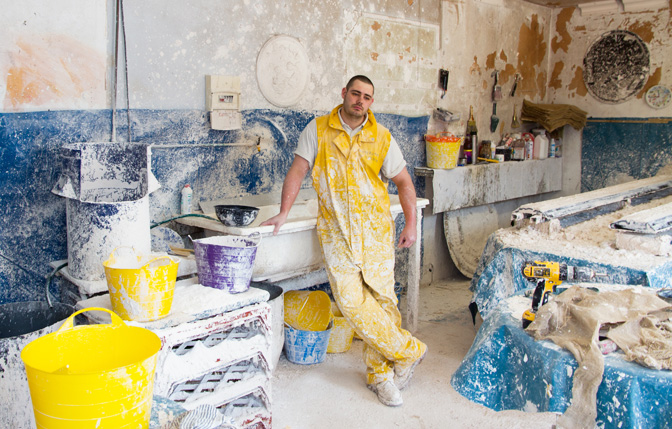
UK union Unite has joined industry representatives, academics and safety and health professionals signing up to a 12-month voluntary plan of action to tackle the risks from inhaling silica dust at work.
Respirable crystalline silica (RCS) The potentially deadly mineral is encountered in a wide range of jobs from construction, to mining, ceramics, stone masonry, quarrying, brickmaking and fracking. Exposures can cause the lung-scarring disease silicosis, lung cancer and other chronic health problems.
Discussions convened by the Institution of Occupational Safety and Health (IOSH) last year have resulted in the new pact. Representatives from the UK’s Health and Safety Executive (HSE), the Office of Road and Rail (ORR), Crossrail Ltd, the Mineral Products Association and Unite are among those to have joined IOSH in signing the commitment.
Signatories have agreed to work together to reduce exposure to RCS through effective monitoring and management of dust. They also say they will increase awareness and understanding of the potential health risks associated with exposure to RCS in order to change attitudes and behaviours and share good practice on the management of RCS across industry sectors.
In the commitment, the organisations state that it is “an agreed plan of action that will pool the knowledge and resources of some of the leading organisations involved in managing the risks of RCS”.
According to Imperial College London research, around 800 people in Britain a year die from lung cancer caused by prolonged RCS exposure at work, with 900 new cases being diagnosed annually.
In the commitment, Unite national safety officer Bud Hudspith notes: “Silica dust kills thousands of workers every year – Unite is committed to improving controls on silica and challenging employers and regulators at every level to achieve this. Where relevant, we expect to see explicit commitments in tender documents on the control of silica dust.”
The voluntary IOSH-backed pact falls short of a key UK trades union demand for a tighter silica exposure standard, backed up by rigorous enforcement. In 2015, UK safety regulator the HSE admitted firms were continuing to expose workers to excessive levels of silica dust.
In March 2016, the US Labor Department announced it would halve the occupational exposure standard from the level it then shared with the UK, 0.1mg/m3, to 0.05mg/m3.
